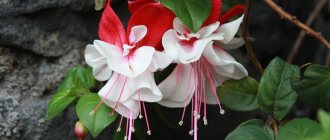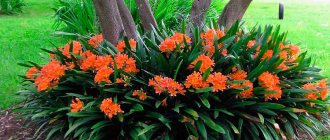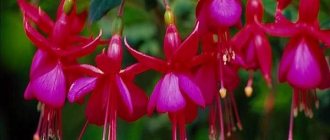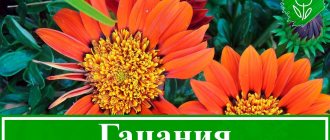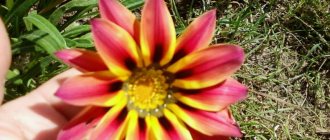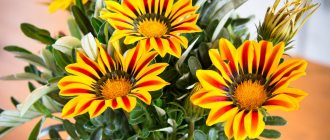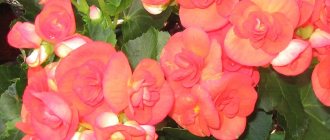The solemn and austere “daisies” of Gatsania are one of the largest and most original among the entire Astrov family. This plant attracts fans of geometry and modern patterns in potted format. And if on the streets, balconies and terraces gatsaniya seems to be a real star, then as a houseplant it is almost unknown. Meanwhile, it is Gatsania, of all the bright and fashionable summer plants, that is best suited for growing indoors. And although she has her own whims and requirements, it is not at all difficult to get her to bloom ceremoniously. And this is the only way to preserve flowering bushes in the fall.
Bright gatsaniya is the most unpretentious among summer gardeners at home
Features of container format gatsaniya
The indoor career of gatsania is mainly connected with the desire to preserve bushes that bloom before frost and extend their flowering period into the winter months. Gatsanias do not stop flowering even in late autumn. And if the plants are transferred from the garden to pots and put away in winter gardens, greenhouses or rooms, you will be able to admire the beauty of the amazing midday daisies for many months.
Those who have at least once seen the beautiful gatsaniya in an indoor format can no longer refuse to grow it. Moreover, even in summer the plant grows and blooms beautifully in rooms and on balconies. But increasingly, gatsaniya appears in the list of annuals and perennials not only for the garden, but also for the interior.
Gatsania is often touted as one of the wonders of breeding, an artificially bred plant not found in nature. But species of Gatsania are an integral part of the flora of South Africa.
Despite the fact that these charming plants are found in gardens mainly as annuals, gatsanias remain herbaceous perennials, and in suitable conditions they will overwinter and bloom the following year.
Gatsania belongs to the stemless herbaceous perennials. They develop in the form of compact basal rosettes, from the center of which large flowers rise on strong stalks.
Gatsania's modest size compared to other Asteraceae makes it a particularly suitable candidate for potting. Gatsania, even in gardens, does not raise flowers to a height of more than 30 cm, remaining amazingly compact and modest. Gatsaniya is characterized by a strikingly powerful rhizome with a long tap root, which requires a specific choice of containers for growing the plant.
Their elongated-lanceolate, polymorphic, often turning into an elongated-pinnate and partially pinnate form, the leaves, variable even in one bush, are very bright. Dark green, always appearing fresh and dazzling, they unexpectedly surprise with a rather hard texture and a silver back that seems too unexpected for a plant.
The contrast between the smooth outer side of the leaf and the pubescent underside is quite original. Gatsania bushes look elegant even without flowering, pleasantly contrasting with any other indoor crops.
Container format gatsaniya requires deep containers. © vanmeuwen
How does gatsaniya bloom in rooms?
The European name of the plant – “midday gold” – perfectly characterizes the appearance of this amazing plant. Gatsania truly reminds of the pouring sun and the brightest colors of a sunny garden. The flowers open at noon. They seemed to have absorbed all its colors.
The botanical name gatsanii is often used in direct transcription - gazania, although most gardeners know the plant under a softer name.
Gatsania produces single inflorescences-baskets on strong, straight, rigid peduncles. The latter develop not from the center of the rosette, but from the axils of the leaves, so that the flowers are located amazingly evenly in the rosette.
The inflorescence baskets of Gatsania consist, like all asteraceae, of a beautiful dense center, which has small tubular flowers with a very warm, yellow-orange, almost classic golden color, and several rows of lanceolate, large reed flowers, forming a bright circle around the golden center.
Beauty is given by a spot or stroke on each petal, which, as if rays, emphasize the golden center. The diameter of gatsanii inflorescences can reach 7-8 cm. For such a small plant they seem simply huge.
The color scheme of gatsanias includes warm shades, reminiscent of the colors of sunny summer. White, light yellow, yellow, orange, red, up to all shades of brown and the darkest and most saturated, almost black - these are color variations that form complex patterns.
The plant has dark lilac-brown spots at the base of the reed flowers that give the plant a sense of graphicness and severity, although many varieties of gatsanias lack this feature. Gazanias seem to glow on the windowsills.
This plant can bloom tirelessly. Usually, even potted gatsanias bloom only by mid-summer. Flowering ends only when the plant is exhausted or begins to suffer greatly from lack of light. In gardens, gatsanias can bloom until frost, and proper care allows you to enjoy flowering in rooms until mid-autumn.
The plant does not lose its ability to bloom only on fine, sunny days even in rooms. Gatsania opens luxurious bright daisies only in bright light, closing at night or in cloudy weather.
After flowering, gatsanias produce very attractive, densely pubescent achenes.
Gazania Hybrids. © J. Richard Link
Why is it recommended to plant a flower with seeds?
Experienced gardeners prefer growing by seeds, as this method allows the seedlings to become well established before planting in open ground. Material for planting can be purchased at the store or collected after flowering of a previously planted gazania.
It is better to harvest the seeds yourself, as they provide 99% germination.
The problem with self-harvesting may be early frosts. The seeds do not have time to ripen properly in northern regions, making them difficult to collect. To prepare the material, you need to hang gauze on the wilted buds. Once ripe, the seeds will fall out on their own.
Types and varieties of indoor gatsanias
Several species of Gatsania are grown in gardens, although less diverse and original wild or natural African species have almost completely replaced hybrid varieties.
hybrid Gazania is considered as a full-fledged indoor and container plant . These are compact varieties up to 30 cm high with linear or palmately dissected leaves, most often with a reverse silvery edge and inflorescences up to 8 cm in diameter, blooming in mid-summer.
The variety of varieties of this versatile plant, represented mainly by super-hardy hybrids, allows you to make a choice purely according to personal tastes. Gatsanias are selected according to the color of the inflorescences - the degree of variegation, shades, and size of the baskets.
If you want to keep gatsanias as a perennial, then you can also move plants of other types into the rooms:
- Gazania linearis is a beautiful creeping species with solid bright leaves with white edges on the reverse side and golden-brown baskets that bloom only in August.
- Gazania rigens is a beautiful perennial with short shoots, dense incised leaves and medium yellow-orange baskets, reminiscent of the sun and appearing on the bushes in June.
Gazania linearis. © azrocklady
How to prepare a plant for winter
Due to the peculiarities of the climate, gatsania in our region, instead of long-term development, have become an annual crop. It won't survive the winter if you don't take care of it in advance.
After collecting the seed material and the onset of the rainy season, it will be too late to prepare. Therefore, it is better to prepare containers with fertilized soil in advance.
Transplantation begins when the air temperature drops to 10 degrees.
Store collected gatsanias on balconies, sheds, and other rooms at a temperature of 5-8 degrees with low humidity.
Conditions for growing indoor gatsanias
The conditions and care should be the same for purely indoor gatsanias, which bloom for an amazingly long time and, with the right approach, can please even in winter, and for garden-indoor gatsanias, which move into rooms only with the arrival of the first frosts.
Lighting and temperatures are key to growing this plant indoors. If it is not possible to expose the gatsaniya to bright light and provide additional lighting or movement on cloudy days, success will not be achieved.
Despite the fact that the idea of growing gatsania in a purely indoor format arose from the desire to preserve it for the winter where frosts are too severe for African chamomile, indoor gatsania is divided into two groups:
- true indoor plants that were originally grown for the interior;
- garden and indoor plants, which are moved indoors in the fall to preserve or prolong flowering.
Caring for these two types of indoor gatsanias should be the same, as should the growing conditions for this crop.
Lighting and placement
Already light-loving in itself, in an indoor format gatsaniya simply will not be able to grow and bloom normally even in light partial shade. Only window sills are suitable for it - and the brighter they are, the better.
South windows and bright balconies are the only option for indoor gardens and for plants that move into the rooms from the garden. With the onset of autumn, in order to continue flowering indoor gatsanias, which were originally grown in potted form, it is important to respond promptly to changes in lighting.
On cloudy days, blooming gatsanias provide additional light. You should do the same with plants that have been moved from the garden to winter in bloom.
Gatsanias look great on window sills in the kitchen, where you can admire the plants to your heart's content. They seem to be created for decorating handicraft corners and children's rooms. Their beautiful baskets fit perfectly into dining rooms and balconies.
Gatsania can be grown not only as single bushes in separate pots, but also planted in the same containers with other herbaceous plants.
Temperature and ventilation
Gatsania are so thermophilic that they are comfortable only in temperatures exceeding 20 degrees Celsius. Room mode is quite suitable for them, but these unique plants are not afraid of heat.
If temperatures exceed 25 degrees, gatsanias become more demanding of access to fresh air. Wintering gatsanii is a relative concept. The plant is most often simply thrown away when flowering ends. But if you create the right conditions, it does not stop at the end of summer and beginning of autumn, but can cover the entire winter.
The air temperature for gatsanias that continue to bloom should not fall below 10 degrees Celsius, but an increase above 15 degrees is undesirable. Coolness prolongs flowering for a longer period.
Gatsanias that are left in pots can be displayed on balconies or taken out into the garden, if possible. They love fresh air and will not grow without normal air circulation around the bushes. In the heat, only fresh air compensates for the uncomfortable indoor conditions.
A unique feature of gatsaniyas is their resistance to drafts and winds. This plant is able to cope with any conditions, it is not afraid even of open balconies at high altitudes, which, of course, is a huge advantage along with their heat resistance.
Gazania rigens. © Al
When to plant depending on the region?
When growing seedlings, it is necessary to take into account the heat-loving nature of the African flower. In different regions, planting activities are planned based on climatic and weather conditions.
In Moscow and Moscow region
For the Moscow region and Moscow region, it is recommended to plan sowing seeds in the second or third ten days of March.
In the middle zone
In the temperate climate of the middle zone, planting activities are carried out in the first ten days of March.
In the Urals
Due to harsh climatic conditions and late spring, it is recommended to postpone planting exotic seeds for seedlings to early or mid-April.
In Siberia
To get healthy gatsania seedlings in the Siberian region, seeds are planted from the end of March to the end of April.
In the Leningrad region
For residents of St. Petersburg and the Leningrad region, it is recommended to begin sowing activities at the end of March.
Caring for gatsaniya at home
Protecting plants from waterlogging, careful care, careful monitoring of lighting and modest feeding - that’s all that gatsanias in potted form need. Regardless of whether they grew only in containers or spent the summer in the garden, gatsanias remain easy-to-care crops and fully retain their high endurance.
Watering and air humidity
Indoor gazania partially retains its drought tolerance. It does not tolerate damp substrate, but will stop flowering if it dries out completely. Do not allow too much watering or water that accumulates in the trays.
The watering schedule for this plant needs a very specific one: from the moment active growth begins and planting in the main container until the first flower begins to open, the plant needs very high substrate moisture, and after flowering begins it needs to be dried more strongly.
Gatsaniya is watered indoors only after the top layer has dried before flowering and the middle layer of soil has dried after flowering has begun. Even in summer, you should not water this plant more than 2 times a week. Light watering in small portions is preferable to too generous watering.
There is no need to increase air humidity for gatsanying. These plants tolerate dryness well and, on the contrary, suffer in too humid environments. When choosing a place for beauties, you should install them away from moisture-loving plants. The heat for dancing is compensated not by humidity, but by access to fresh air.
Top dressing and fertilizer composition
Like any lush-flowered annuals and perennials that do not change their garden habits, gatsanias in indoor format prefer fairly frequent feeding. It is better to apply fertilizers to the plant every 10-12 days, but only during the flowering period.
They begin feeding 3 weeks after planting or replanting, with half-reduced doses, and then from the budding period the usual dosage is used.
Gatsaniya prefers special fertilizers for beautiful flowering plants. Universal fertilizers will not reveal the beauty of the plant; when applied, the leaves of the bushes will grow to the detriment of flowering. For gatsaniya, you can also use special preparations for buds during the growth period of peduncles to increase the size of the inflorescences.
Trimming and shaping gatsanias
Gatsaniya prefers special fertilizers for beautiful flowering plants.
© J. Parker’s The only measure that gatsanias will need is to cut off the fading inflorescences. Baskets on gatsanias quickly change color to a faded brownish-brown, so it’s not difficult to notice the right moment. The cutting is carried out with the entire peduncle. If you leave the inflorescences on the plant for a long time, the flowering will stop.
Dry parts of plants need to be removed regularly. If the bushes are preserved until spring, then pruning the shoots and cleaning will allow them to recover faster. You should not leave even partially dry leaves on gatsaniya. If the buds fade, quickly cutting them off stimulates the production of new flowers.
Transplantation, containers and substrate
For purely indoor gatsanias and plants that are grown for a single, but longest flowering period, replanting is not required. The rules below can be considered as planting rules.
If gatsanias that have overwintered in a garden room (or indoor non-flowering specimens that have survived until spring) want to be grown further, the bushes need to be transplanted into fresh soil in the spring to stimulate growth and prepare for re-blooming.
Such plants are transplanted into the garden after the onset of stable heat, and the key rule is the complete preservation of the earthen clod, which cannot be destroyed both during planting and replanting.
Gazanias need fairly spacious containers. They have long roots, and for normal development it is better to select deep enough pots. They look great in groups in large containers and containers, in all round pots.
Gatsanias grow best in ceramic pots. But the key feature for the container should remain large drainage holes.
The substrate for gatsanii must be permeable, fairly rough, and not compacted, but many consider fertility to be the key characteristic. Any universal and high-quality substrate for summer gardens or balcony vegetables, as well as any universal substrate for indoor plants with a complex composition, will suit them.
When replanting plants, place large drainage at the bottom of the containers. Ceramic shards, vermiculite, expanded clay are preferred. The soil is poured gradually, after installing the plant with a solid earthen ball on a small cushion of soil above the drainage. Contact with roots is unacceptable; any, even the slightest, injuries to long taproots lead to loss of plants.
After planting and replanting, indoor gatsanias are placed in mild conditions for 2-3 weeks, protected from direct sun, heat and drafts. If the plants were transplanted from the garden, you should try to make the transition as soft as possible, placing the gatsanias in an intermediate quarantine with average temperatures and garden-like lighting. Access to fresh air will help the plant survive relocation less painfully.
Large drainage holes should remain a key feature of containers for growing gatsanias. © deanna-durbin
Planting methods
If you want your gazania to have large flowers, you need to plant seedlings for it. It is important to know that the plant begins to bloom when at least three months have passed since the emergence of seedlings. That is why sowing seeds in May will give results only in August or even closer to its end. This time is unfavorable if we talk about our country, because frosts may already begin on most of its territory, which are unacceptable for gatsaniya.
To understand when it is better to sow the seeds of the plant in question in 2022, you can turn to the lunar calendar for help:
- From 21 to 27 February;
- In March, it is recommended to sow twice: from the 5th to 9th and from the 20th to 25th;
- Favorable days in April are considered to be the 4th–8th.
When planting seeds and seedlings, you need to take into account the climatic conditions of each specific region. In areas where warm spring and summer begin later, it is better to begin the sowing process in March. This is explained by the fact that seedlings should not be kept at home for too long, because this makes them weaker and thinner. Due to the fact that gatsaniya loves a lot of warm light, if you plant it too early, be prepared to provide it with high-quality illumination from a lamp.
At what air temperatures should seeds be sown and seedlings planted?
When picking gatsaniya seedlings, you need to be especially careful
The most acceptable temperature for planting seeds is +18 degrees. Before emergence, this indicator is increased to +22 degrees. As soon as the seedlings begin to rise above ground level in the box, the temperature is again reduced to +18 degrees.
The further process of development of gazania occurs at temperatures no higher than +15 or +16 degrees. If it is higher, the plant will stretch upward and be less strong.
Before planting in open ground, the gatsaniya is taken outside for 40 minutes. Every day this time is increased so that the plant gets used to the temperature outside.
When to plant gatsaniya when growing from seeds + step-by-step instructions
You need to grow seeds for seedlings in well-prepared soil. To do this, use light, nutritious, moisture-permeable soil. The most suitable option is a mixture of peat and sifted sand in a 1:1 ratio, as well as turf soil and compost in a 2:2 ratio. If the total volume of soil is 10 liters, do not forget to add complex mineral fertilizer to it (no more than 3 matchboxes).
Recent Entries
Lilac perennials that are beautiful, compact and do not crowd out other plants Why when buying seedlings you should not take the sellers’ word for it and how to determine the age of the plant using 3 signs Tomato seedlings have turned purple or whitish: why the color has changed and how to save the plants
- Before placing seeds in the soil, it must be calcined at high temperature for about 3 hours.
- After this, a highly saturated solution of potassium permanganate is added to it, cooled and began to be poured into the container where the seedlings will grow.
- 10 mm of expanded clay is poured into the bottom of a low seedling box, and prepared soil is poured on top of it. Its height should be within 30 mm. To make the seeds germinate faster, they need to be soaked in hydrogen peroxide for 3 hours.
- Well-compacted soil is watered abundantly with water and the seeds are laid out in a checkerboard pattern at a distance of 20 mm from each other.
- Then another 10 mm of soil is poured on top of them, sprayed with water and a plastic film is tightly pulled over the box. This way the seeds will germinate faster. Regular ventilation of crops and drying of the film will help to avoid the appearance of mold. At the same time, you need to ensure that the room with the seedlings is warm, so it is recommended to install the container close to the battery.
- The seeds germinate within a week. In order not to harm them, open the film and move it closer to sunlight in a place where there is no draft at all. Watering is carried out only on well-dry soil.
How to sow at home: video for beginners
In order not to damage the root system of gatsania during transplantation into open ground, it is recommended to pick the young growth when the sprouts have 4 leaves. Peat cups are used for picking (their volume should be no more than 200 ml). Soil with an acidity level of pH from 5.5 to 6.5 is poured into them almost to the very top. Having made a hole in the container, the seedlings are buried down to the cotyledon leaves. This is how they grow until they are planted in the flowerbed.
How to pick pots: video guide
Diseases, pests and problems in growing gatsaniya
Incorrect watering greatly affects the condition of gatsanias, because the roots and stems are quickly affected by rot when the substrate is damp. Gatsanias are especially prone to infection with gray mold, but other fungal infections are not uncommon. Controlling them requires the use of strong fungicides and immediate isolation of the plant.
But they are practically resistant to indoor pests, with the exception of neglected bushes.
If gatsanias are moved from the garden and taken out into the fresh air for the summer, they may suffer from aphids, slugs and snails.
How to care for gatsaniya seedlings, what are the tricks?
The first shoots appear 6-9 days after planting. As soon as sprouts appear from the ground, the covering material is removed and the containers with the plants are transferred to a well-lit room. For proper growth and development, seedlings need long daylight hours, otherwise the sprouts stretch out, become weak, and often get sick.
Gatsania seeds have sprouted, what to do next?
Seedlings also require timely watering, fertilizing and fertilizing.
Water the flowers with warm, settled water. When watering, it is necessary to avoid getting moisture on the leaves of plants. Irrigation measures are carried out as needed, preventing both the soil from becoming waterlogged and the soil from completely drying out.
How to feed gatsaniya seedlings?
If the seeds were planted in a purchased universal soil mixture, additional fertilizing will not be required. In other cases, mineral and organic substances are used to fertilize seedlings, strictly following the instructions on the packages with the preparations.
Rules for picking gatsaniya
Plant picking is carried out by planting bushes in different containers with fertile soil. Work begins as soon as 3-4 true leaves appear on the plants.
When and how to collect plant seeds
It is difficult to collect seed material on your own due to the short summer. If the season was hot, autumn was dry, and there was little rain, then the seeds will ripen safely. Identify the seed sac by its shape: it resembles a dandelion.
To prevent the seeds from scattering, the box is packed in a bag or fabric base. A light breeze will blow them away if you do not prepare in advance for the moment of ripening.
Semi-dry inflorescences are suitable for collection, but must be healthy. When the seeds fall into the trap, the bag is removed. Additional grains are dried in it and stored in a dry, dark place. The shelf life of gatsania material for seedlings is 2 years.
